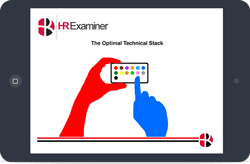The Twitter Revolution III
The Twitter Revolution III (here’s Part I and II)
(Mar 27, 2009) What separates humans from other animals is the sense of self-awareness. Increasingly, technical innovation is self-aware. The (probably unintentional) brilliance of Twitter is its lack of functionality and intention. That’s what gives it the ability to become self-aware as it evolves.
These days, I carry business cards made by a web-based cartoonist. At first, it was about self-promotion. Now, I’m using a card that teaches something important. On the back of my cards, it says:
“It’s not what the software does, it’s what the user does.”
This is the single most important idea in software development today. Like “Just Work”, the core idea is that the locus of control has shifted. Not big booming voices dictating social norms, incremental progress built on sustainable values. We’ve exhausted the ‘one brilliant guy knows enough to change everything’ model and are shifting to the view that our customers are smarter than we are.
Twitter works because it doesn’t do very much. It’s managers never tell you what ‘should’ happen. Functionality emerges from the cleverness of users. Twitter is the perfect example of “It’s not what the software does; it’s what the users do.”
The result is a technology that is barely distinguishable from the people who use it.
The opportunity, available to anyone who wants to use the API, is to imagine Twitter the way you want it. There don’t appear to be any meaningful boundaries, just good business manners and propriety. Everything that you assume about Twitter creates a barrier to your own innovation there.
Go over to Facebook. You’ll see the full frontal consequences of the digital camera revolution. What are people taking pictures of? Themselves, mostly. It’s not unusual to see FB users with hundreds of self-portraits.
The photographic self-portrait only existed as a minor art form before 2001. Broad dissemination of digital cameras with a change in form and no rules brought this new ‘mirror’ into existence. All those cameras had to take pictures of something.
It’s not simply narcissism, it’s the first step in the emergence of self-awareness in a technology.
I’m on Twitter, Facebook, LinkedIn and Friendfeed. Catch up with me.
John Sumser
John Sumser is a principal analyst for HRExaminer, an independent analyst firm covering HR Technology and the intersection of people, tech, and work. John’s mix of experience over the course of his career gives him a broad and unique perspective on the industry. Like anyone trying to process a lot of information, he is two or three steps ahead in some areas and still learning about others. Sumser’s work includes deep research into the nooks and crannies of HR Technology to identify and explain rapidly evolving trends. Built on a foundation of engineering, design, and philosophy, John’s seeks to understand and advise clients on where their technology works best, for whom, and in what context. Each year, John examines the insides of hundreds of companies, their products, and ecosystems. He delivers vendor analysis by building the framework from which to deliver the critique. He is constantly connecting and making visible the front end of change. He can help you see the path of evolution and the risks on the journey. The HRExaminer is Sumser’s vehicle for understanding and explaining the inner workings of the industry. With three weekly podcasts, and written commentary, he covers emerging ideas, the state of the industry, and the executives who operate it.











